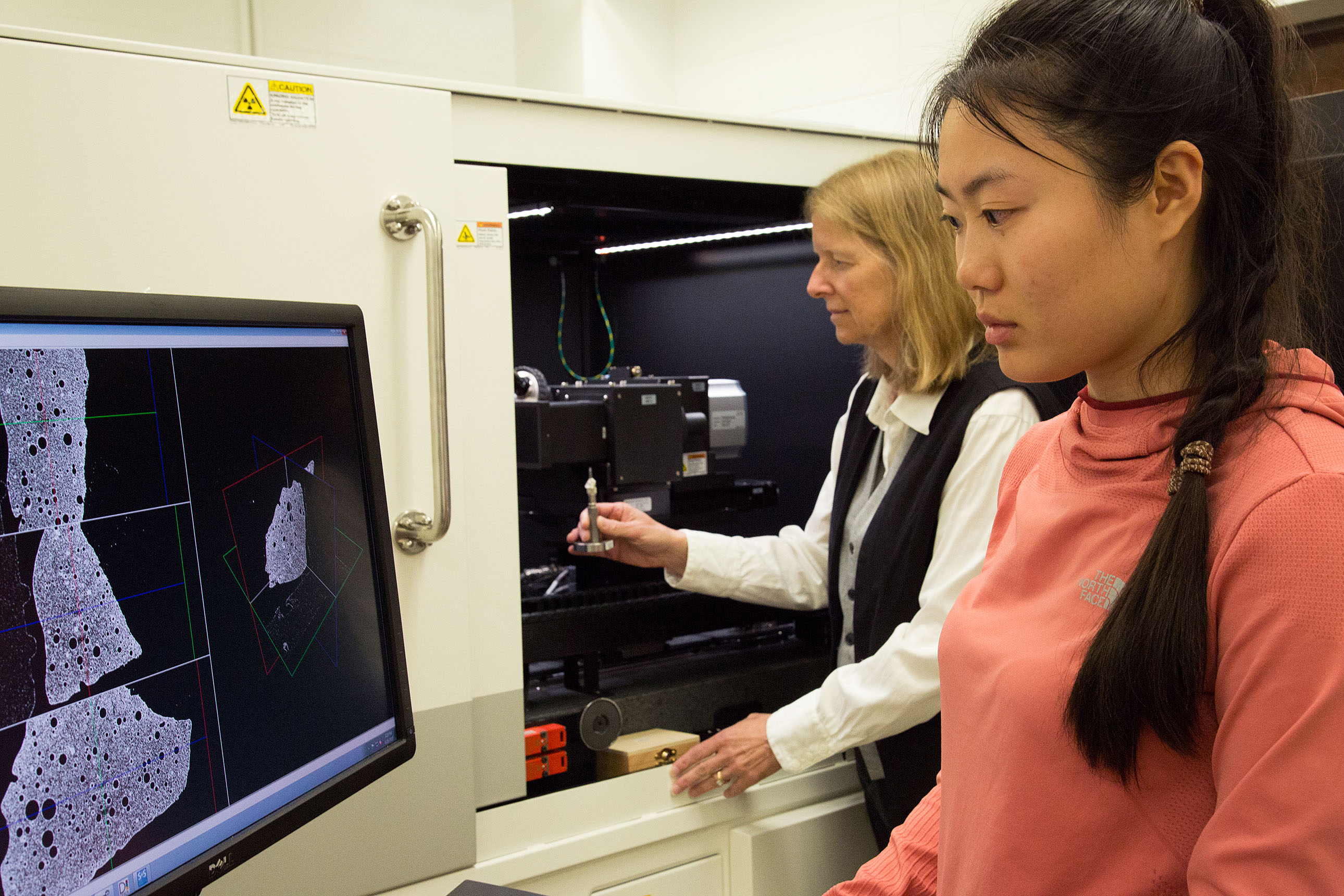Researchers from Purdue University and Sandia National Laboratories have used 3D printers to develop a new way of understanding how and when structural fractures develop. The research paves the way for detecting and predicting fractures remotely.
Having the ability to detect and predict fractures is vital to improving safety and efficiency in mining, gas operations and the disposal of nuclear waste. However, the researchers say that it could also be important to understanding the structural integrity of 3D structures such as bridges and human habitats on other planets.

How 3D printing led to the breakthrough
Before they began using 3D printing, scientists such as Purdue professor Pyrak-Nolte and student Liyang Jiang had to experiment on natural rock samples or create rock samples using mineral water and powder to make casts. However, results obtained using this method did not provide a reliable basis for determining the causes of fractures, because each rock had different features and characteristics. One of these features is the orientation of their “mineral fabric” or the way the mineral components that make up rock layers and formations are organized.
In order to produce scientifically valid results that the researchers could draw conclusions from, the rocks would need to have identical features and an identical mineral fabric. The researchers produced 3D printed rocks for use in their experiments, which allowed them to control every aspect of the artificial rock, and make them identical. Putting these rocks under pressure, the team discovered patterns that allowed them to identify rocks based entirely on the reactions of their mineral fabric to the stress applied.
“Because of the new 3D printing technology, we’re able to test rocks and gather reproducible results. We can design the shape in all dimensions, and it’s a much more accurate process than working with natural rock or casts of rock,” commented Jiang.
In a similar fashion to rocks, 3D printed substances are also constructed using layers. In this case, the researchers used a 3D Systems ProJet CJP 360 3D printer to produce artificial gypsum rocks featuring layers mimicking those found in naturally formed rocks.
To fabricate the rocks, the 3D printer uses binder jetting technology, which involves putting down a layer of bassanite powder, then a binding agent is sprayed over it, before another layer of bassanite powder is laid on top of that. The process causes a reaction of the powders with a water-based binder solution, producing a gypsum sample with layers bound by gypsum crystals.
By printing various samples with different orientations of mineral fabric and putting them under stress, the team began to notice a pattern in the way that they broke. The research team discovered that they could identify which sample had been broken, just by looking at the kind of fracture and the shape or smoothness of the rock, or its corrugations.
“The key idea is that if we understand how corrugations are produced, just by looking at a rock sample we can remotely predict fracture geometry and preferential flow paths for fluids,” said Pyrak-Nolte.
While the study is ongoing, the latest findings are detailed in the report titled ‘Mineral Fabric as a Hidden Variable in Fracture Formation in Layered Media’ in the Scientific Reports journal. It is authored by Liyang Jiang, Hongkyu Yoon, Antonio Bobet and Laura J. Pyrak-Nolte.
Purdue University and Additive Manufacturing
Purdue University has a track record of using 3D printing to overcome technological challenges. For instance, the University made it to the finals of a GE-sponsored competition in August last year, which challenged teams to design a novel 3D printed metal heat sink to effectively cool down electronics.
In addition, researchers from the university’s School of Mechanical Engineering published a study in early March detailing the development of trackable 3D printed microrobots. While other microrobots had been limited in their applications due to their small size, the research team’s novel method of patterning the microrobots is expected to make them suitable for biomedical applications.
Pharmaceutical companies are also taking advantage of the expertise at Purdue University, with Aprecia Pharmaceuticals announcing a partnership with the University’s College of Pharmacy earlier this month. Their collaboration will focus on developing future 3D printed pharmaceutical equipment and medications, bringing together an exchange of faculty, research scholars and students to take part in joint collaborations in research.
You can now nominate for the 2020 3D Printing Industry Awards. Cast your vote to help decide this year’s winners.
To stay up to date with the latest 3D printing news, don’t forget to subscribe to the 3D Printing Industry newsletter or follow us on Twitter or liking our page on Facebook.
Looking for a job in the additive manufacturing industry? Visit 3D Printing Jobs for a selection of roles in the industry.
Featured image shows the main entrance of Purdue University. Photo via Matthew Thomas/Purdue University.



